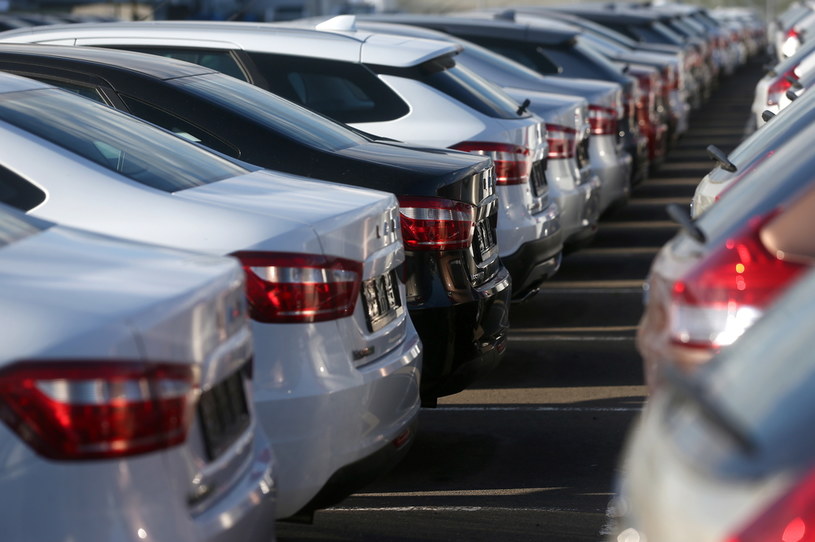Have you ever stopped to consider the sea of cars you encounter every day? A kaleidoscope of colors, from vibrant reds to sleek blacks, they make up the visual tapestry of our roads. But have you ever wondered which color reigns supreme? Which hue dominates the automotive landscape? Today, we embark on a quest to uncover the most common car color, delving into the reasons behind its prevalence and exploring the fascinating history of color choices in the automotive world.

Image: motoryzacja.interia.pl
This question, seemingly simple, reveals much about human preferences, cultural trends, and even the impact of the automotive industry itself. The answer, you might be surprised to find, isn’t as straightforward as you might initially think. While certain shades consistently hold a top spot, the most common car color is not necessarily the same across different countries, time periods, or even vehicle types. Let’s dive in and explore the intricate world of automotive hues.
A Historical Stroll Through Car Colors
To truly understand the prevalence of certain car colors, we must journey back in time. The early days of automobiles were marked by a limited palette. Black, the dominant color, was chosen for practicality. It was the most affordable to produce and hid blemishes more effectively compared to lighter colors.
However, the world of automobile colors began to expand in the 1920s and 1930s. The introduction of new pigments allowed for a wider range of hues, and car manufacturers saw an opportunity to capture the imagination of consumers. Colors like maroon, green, and blue became increasingly popular, reflecting the changing tastes of the era.
The post-World War II era witnessed a surge in the use of bright, optimistic colors. Red, particularly, rose to prominence, symbolizing dynamism and energy. This period saw a significant shift from practicality to the expression of personality through one’s car choice.
The Reign of Silver and White
Fast forward to the 1970s and 1980s, and a new trend emerged—the rise of silver and white. These neutral hues reflected a growing desire for sophistication and understated elegance. Additionally, silver and white were seen as more practical in terms of hiding dirt and scratches, appealing to both individuals and fleet owners.
The dominance of white and silver continued into the late 20th century, particularly in the American market, fueled by marketing strategies that associated these colors with luxury and high-end vehicles.
The 21st Century: A Spectrum of Color Preferences
The 21st century has witnessed a more diverse and dynamic approach to car colors. While white continues to hold a strong position, there’s a growing preference for other shades, influenced by factors like cultural trends, environmental awareness, and even technological advancements in paint technology.

Image: psoriasisguru.com
The Power of Grey
Grey has emerged as a strong contender in recent years, particularly in Europe and Asia. Its popularity can be attributed to its versatility and modern appeal. It is considered both practical and stylish, bridging the gap between traditional and contemporary aesthetics.
The Revival of Color
However, the automotive world has not completely abandoned bolder colors. Red, blue, and even green are experiencing a revival, especially among younger buyers seeking to express their individuality through their car choice. The rise of customized paint jobs and unique color combinations further supports this trend.
The Ongoing Influence of Vehicle Types and Markets
The most common car color varies depending on vehicle type and market. Luxury vehicles often feature a wider range of colors, with bolder shades like burgundy and dark blue finding greater favor. In contrast, compact cars and SUVs often lean towards more practical choices, such as white, silver, and grey.
Geographic location plays a significant role as well. In countries known for their hot climates, lighter colors like white and silver are favored for their ability to reflect sunlight. Conversely, darker colors like black tend to be more prevalent in cooler climates.
Understanding the Psychology of Car Color
The choice of car color reflects a fascinating intersection of psychological, social, and cultural factors. Studies suggest that certain colors evoke specific emotions and associations.
For instance, red is often associated with passion, energy, and even aggression. Blue, on the other hand, tends to evoke feelings of calmness, reliability, and trust. White is often linked to purity, cleanliness, and sophistication. These associations can greatly influence a buyer’s decision, affecting brand perception, brand loyalty, and overall purchase experience.
The Future of Car Colors: Sustainability and Innovation
The automotive industry is continuously evolving, and car colors are no exception. Sustainability is playing an increasingly important role, prompting manufacturers to explore eco-friendly paint technologies. Bio-based pigments, water-based paints, and recycled materials are all gaining traction in the industry.
Furthermore, technological advancements in paint technology are ushering in a new era of colors with enhanced durability, longevity, and customization options. This includes color-shifting paints, self-healing coatings, and even bioluminescent materials that glow in the dark.
What Is The Most Common Car Color
Conclusion
While the battle for the most common car color continues, one thing is clear—the choice of car color is far from a simple aesthetic decision. It reflects cultural trends, social preferences, and individual personalities. It shapes brand identities, influences purchase decisions, and even reflects evolving trends in technology and sustainability. So the next time you see a car, take a moment to consider its color; it might just tell you a story.





